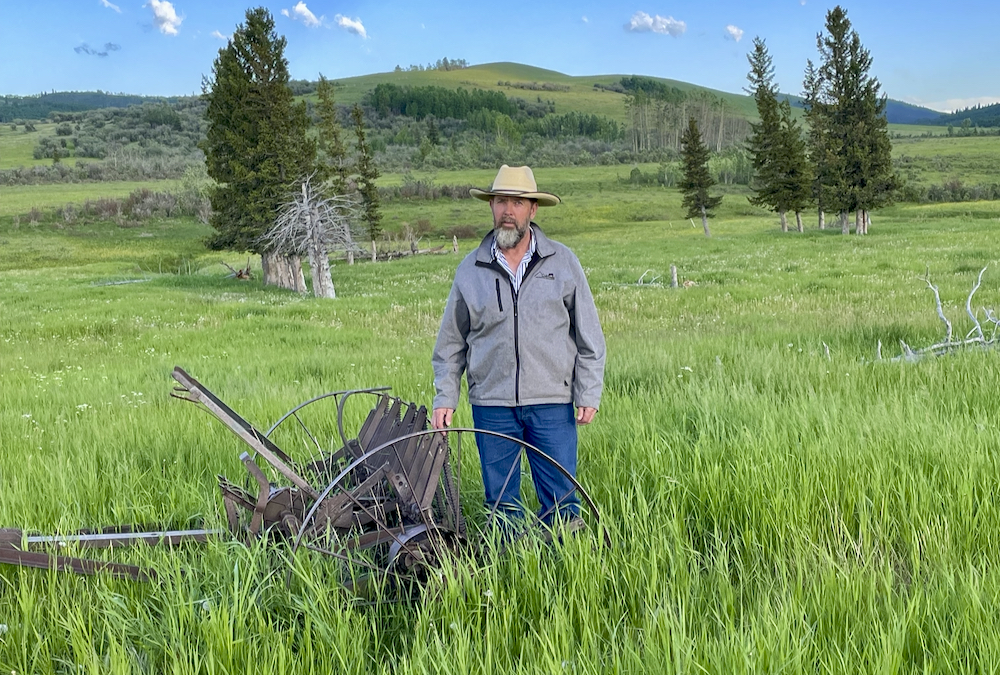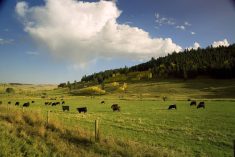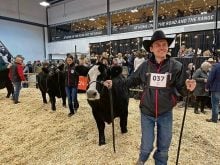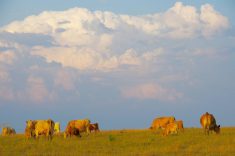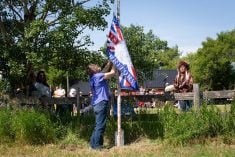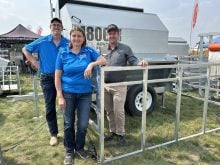Betty Lou Thompson is like many seniors, living in an assisted living lodge and drawing a monthly pension.
However, the cowgirl originally from Sheridan, Wyoming, says the $140 she receives monthly from the 7U Brown Memorial Trust fund is her favourite.
She started receiving the pension after she met its qualifications. The trust stipulates the funds go towards the“maintenance, support and care of such poor and deserving ranchers or ranch employees, or former ranch employees for their families” as quoted in Jean Harrison Brown’s will. The trust was enacted by Brown, a self-declared rancher and spinster, along with her sister Sarah Harrison Brown, in honour of their brother Joseph Harrison Brown.
Read Also
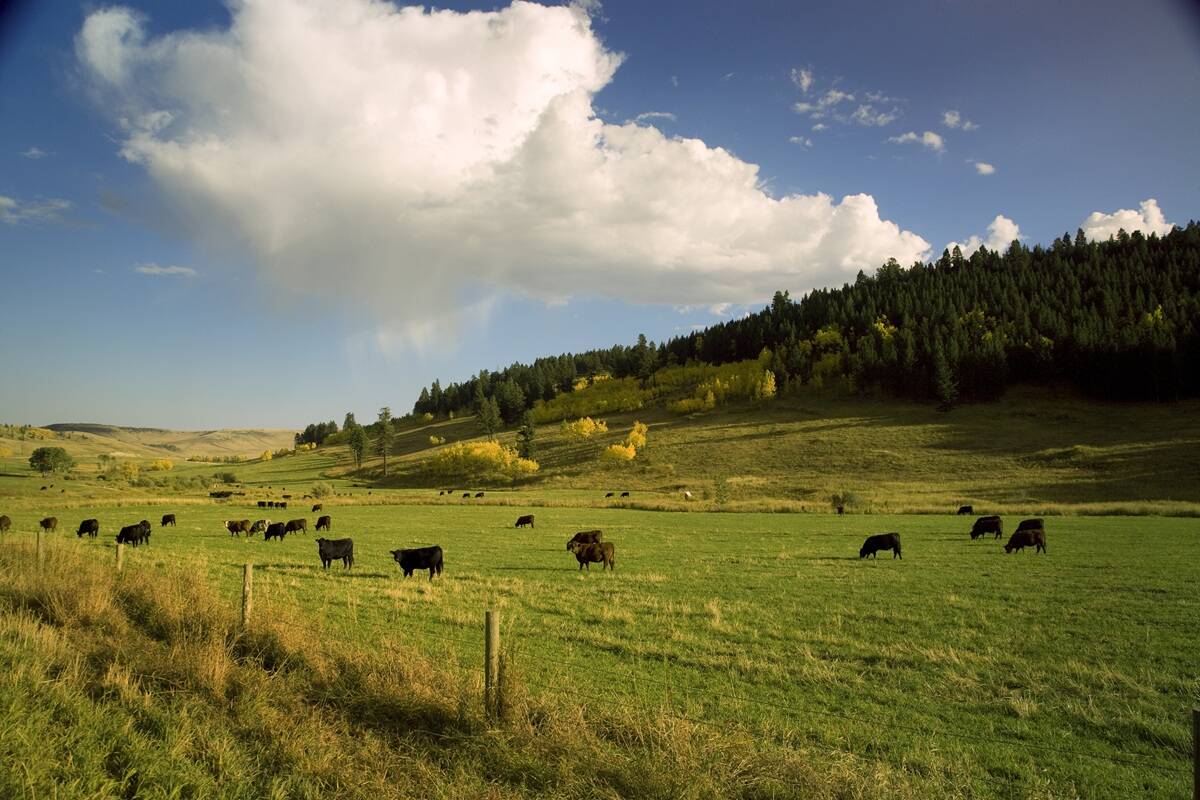
Are you a competitive supplier of weaned beef calves?
Beef farmers and ranchers need to strategically manage costs to achieve and maintain profitability.
The Brown family established a pension fund well before the Canada Pension Plan began in 1965. The legacy she left upon her death in 1953 would ensure future ranching families would benefit from their family’s wealth in perpetuity. A more inclusive codicil was added to her will to include “poor and deserving widows and children of deceased ranchers and ranch employees.”
Thompson, 82, first heard of the pension back in the 1960s from a friend who had been receiving it.
“I cowboyed all my life,” says Thompson, who worked for the Rockin’ P Ranch and the eccentric King brothers. “I think it’s wonderful that (the Browns) would think of the cowboys — especially back aways when they were in more dire straits, because they didn’t have pensions.”
The fund has grown to a million dollars from its original gross value of $540,000. But many challenges loom large for its current trustees. It has become more difficult to find qualified applicants. Revenue and expenses have ebbed and flowed over the last five years, with expenses drawing down more than what the fund is bringing in. But their biggest challenge may be aligning a 69-year-old trust with modern expectations while honouring the legacy left by Brown.
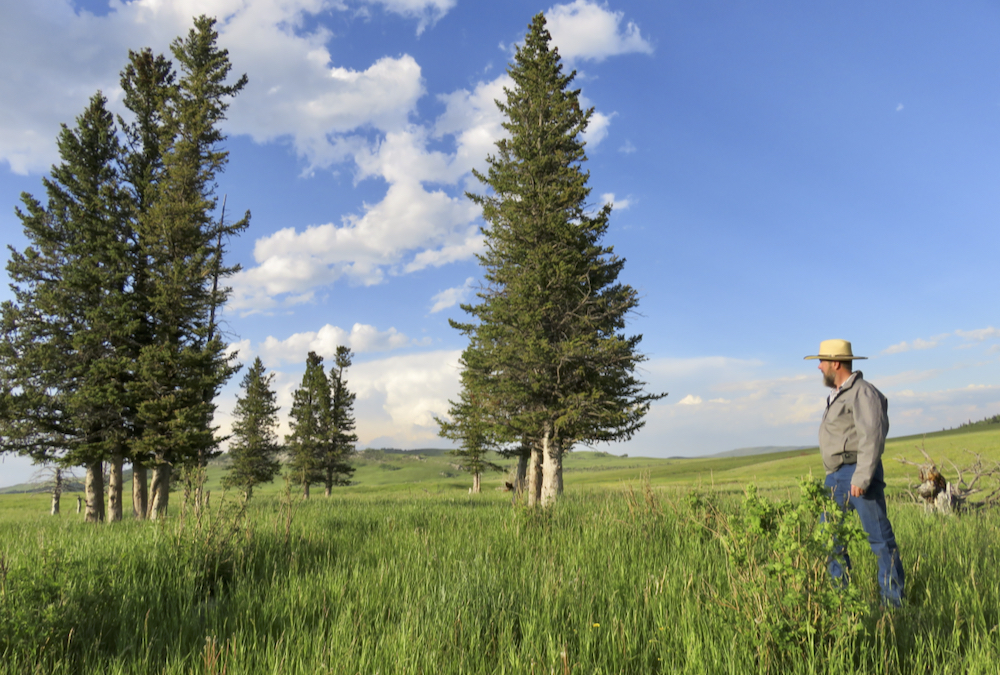
Committee challenges
Brown dictated in her will who would serve as trustees: “there shall be a committee of three persons, one of whom shall be replaced by manager or chief officer of the office at the City of Calgary of the Royal Trust company, and the other two shall be male British subjects of the full age of twenty-one years, residents of the Province of Alberta.”
Wanda Drysdale-Melin of Calgary’s Royal Trust office, Longview-area rancher Alex Robertson and Justin Blades of Nanton, Alta., serve on the committee.
Robertson and Blades joined in 2013 after being encouraged by their neighbours, Francis Gardner and Jim Hughes, both of whom served over 20 years on the committee. Royal Trust representative Drysdale-Melin has been providing custodial and investment services for three years.
Other rules set out by the trust stipulate applicants must have worked on a cattle or horse ranch and currently be Alberta residents. But what worries Robertson and Blades most is a “poverty line income threshold” rule enacted by Royal Trust.
“Years ago Royal Trust decided it was easier (to have that threshold in place) because they have to manage the account. They decided to go with the Market Basket Measure, set by Statistics Canada. That poverty line amount is just over $23,000 a year for a single person living in rural Alberta. If you’re living off that amount or less, you could be eligible,” says Robertson.
“That’s not much money to live on,” Blades agrees. “If you’re trying to pay rent and buy groceries, you’re in trouble. It feels like to me what is limiting us in getting more pensioners is the poverty line. Francis had a few people he turned over to me that had already applied, but they didn’t qualify. When you see these fully deserving people who aren’t qualifying you lose motivation.”
Calgary estate planning lawyer Rolland Lequier says it is quite common for trust companies to set application benchmarks. He explains they would have gone before a justice to get the trust “varied” or changed to successfully implement the rule and establish who can be a beneficiary.
“What Royal Trust is saying is ‘we want a clearly identifiable benchmark.’ The poverty line would make sense. If you’re (living) below a poverty line, you need help — even the government thinks so. It defines a clear class of people that qualify and those that don’t, so someone can’t come along and say, ‘I’m a rancher in Alberta and we had a really tough year last year; but he still owns his cattle, his house. But you’re not poverty stricken. We’re not here to support your ongoing operation. We’re here to support those who really can’t afford to feed themselves.”
Lequier also says the direction of the trust, as defined by Brown’s will, is quite simple: “Here’s the money. Hold it. The net income, after the taxes are paid, can be used to support my class of beneficiaries. But it doesn’t mean all of it. It means use as much thereof as considered as necessary. The language here says they cannot spend the capital.”
Family history
Joseph Harrison Brown was born in Ashfield, County Cavan, Ireland in 1856. After the family immigrated to Canada, he came West as a young man by nonconventional methods: he sailed around Cape Horn, the long and dangerous journey around South America. He found work at the BX Ranch at Vernon, B.C., in 1882.
The following year, Brown found himself trailing 300 horses back to the Bar U Ranch. He spent 15 years working there, and by 1910 he purchased two more ranches south of the Bar U. He sent for his sisters in 1914 to come live with him and the trio would live together, each remaining single.
Brown was known in the community simply as “7U,” after his brand, as another neighbour had the same common name. Robertson says he remembers a story Bert Sheppard told him and his father.
“7U Brown met Rod Macleay (Justin Blade’s great-grandfather) in Nanton in 1920. 7U asked Rod how’d he fare the winter? Rod said, ‘Well I still have all my cows but I don’t have a bank account.’ 7U replied: ‘I still have my bank account, but I don’t have all my cows.’”
Robertson is quick to mention 7U’s generous nature.
“My grandfather Sandy Robertson homesteaded one mile east of Longview in 1906. He hauled oats down to 7U Brown (by team) throughout the 1910s and ’20s. My grandfather wrote to his sisters in Scotland and told them how 7U Brown sent Christmas presents home to my grandfather’s five children. He and his spinster sisters had thought enough of sending presents for the Robertson children.”
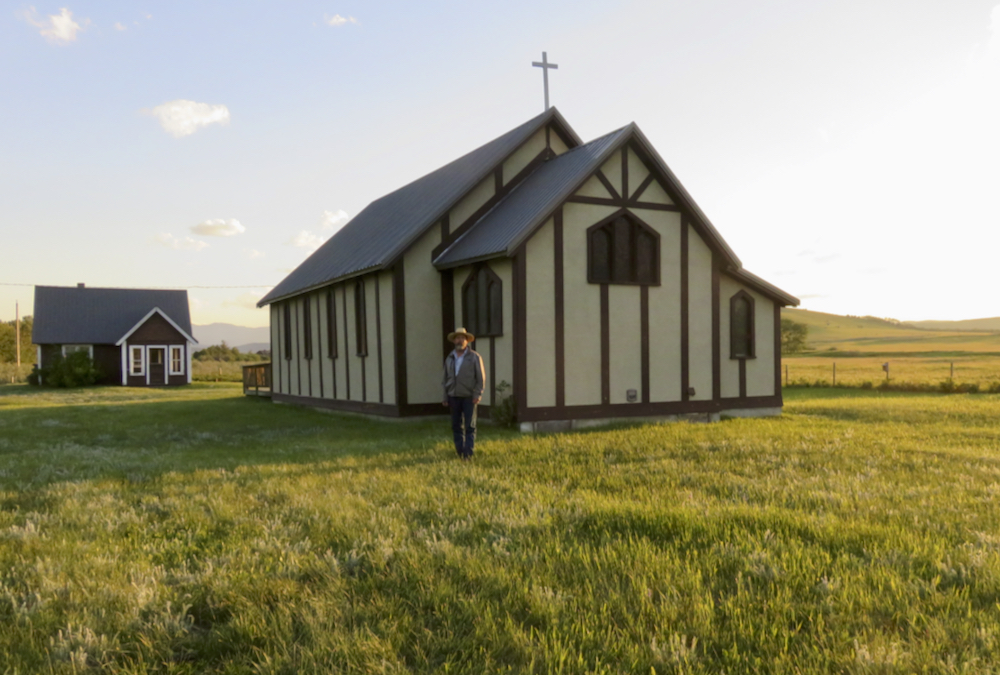
Over time the 7U Ranch grew to nearly 30,000 acres. After Jean passed, it subsequently became part of the Spruce Ranching Co-op and formed what would become one of the first grazing co-operatives in southern Alberta.
Moving forward
Justin Blades believes getting more pensioners is the solution to the challenges the committee faces. While Royal Trust is unable to reveal either the total monies distributed or the applicants due to privacy laws, Blades confirms applications are dwindling. Nearly 80 pensioners were receiving payments back in 1983. Today, there are seven.
Robertson says it’s a goal for both he and Blades to better promote the trust. Former committee member Francis Gardner said during a 2013 committee meeting, “Maybe a history of Jean, Sarah and Joseph Harrison Brown and the 7-U Brown Memorial Trust written in the Canadian Cattlemen magazine may increase applications.”
“Our standard of living has changed so much from when this was (first) set up, that there were a lot more people who qualified. The poverty line then and the poverty line now should really be increased if the money being generated is just going back to Royal Trust. That’s silly to not get it to the people who need it,” says Blades.
“I know Betty could not take part of one of her other pensions, just so she would qualify for this. She said she wanted the cowboy pension.”
Blades also believes that getting a lawyer such as Lequier involved may help the committee move forward. “If he sees a loophole around the poverty line or knows how to change it, that to me opens the door to rejuvenating it.”
Overall, Lequier believes that Royal Trust is doing the right things in terms of financial stewardship. “They have to ensure the trust has the ability to grow. There are rules that govern prudent investments. But you have to make investments that allow it to grow while you’re still paying the bills and honouring the legacy. It’s a real juggling act.”
Lequier says the committee may need to go before a justice to make variations to the trust. “Although the poverty line seems arbitrarily low right now, it provides a very easy benchmark (so the committee) is not spending a lot of time researching (applications). It minimizes the cost of management.
“What I sometimes do is pick a dollar value and fix it to the inflation index. Let’s say it’s $30,000 indexed to inflation. You’d be able to do a mathematical calculation to determine what was $30,000 in 1991 and what is $30,000 today.”
For Thompson, the money is a godsend. “It helps with groceries, especially with prices going up. I just think it’s wonderful that they would think of us you know, the working cowboy type. Otherwise, if I was living in the States, I’d be out living in the streets.”
Tracey Feist spent over 30 years in agriculture communications. Today she operates Bar Open A Ranches Ltd. and loves writing about the western way of life.

